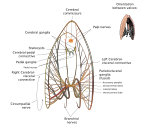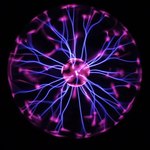JADA JADAHI ...SAMVAWANI JUGE JUGE.
 Mahisasuramardini (Bengali: মহিষাসুরমর্দ্দিনী,The Annihilator of the Buffalo Demon) is a widely popular early radio programme that has been broadcast since 1932[1] on All India Radio (AIR). It is a one and half-hour audio montage of Chandipath (chanting from Chandi) recitation from the scriptural verses of Sri Sri Chandi or Durga Saptashati,[2]
Bengali devotional songs, classical music and a dash of acoustic
melodrama. The program has been translated into Hindi set to similar
orchestration and is broadcast at the same time for a pan-Indian
audience.[3] This programme is aired every year at day-break on Mahalaya.
The programme, which started off as a live-performance, has been
broadcast in its pre-recorded format since the late nineteen-sixties.
However, its great popularity remains undiminished even today.[4][5][6]
Mahisasuramardini (Bengali: মহিষাসুরমর্দ্দিনী,The Annihilator of the Buffalo Demon) is a widely popular early radio programme that has been broadcast since 1932[1] on All India Radio (AIR). It is a one and half-hour audio montage of Chandipath (chanting from Chandi) recitation from the scriptural verses of Sri Sri Chandi or Durga Saptashati,[2]
Bengali devotional songs, classical music and a dash of acoustic
melodrama. The program has been translated into Hindi set to similar
orchestration and is broadcast at the same time for a pan-Indian
audience.[3] This programme is aired every year at day-break on Mahalaya.
The programme, which started off as a live-performance, has been
broadcast in its pre-recorded format since the late nineteen-sixties.
However, its great popularity remains undiminished even today.[4][5][6]
This program has become synonymous with Mahalaya which is celebrated to usher the Debipaksha lunar fortnight and the Durga Puja. To this day, most of Bengal wakes up in the chilly pre dawn hours, 4 am to be precise, on the Mahalaya day to tune into the “Mahisasura Mardini” broadcast. Presently the recordings are available as audio cassettes and Compact Disks from HMV-RPG which has obtained the rights from All India Radio. The CD version (as of 2002) contains 19 tracks.[7]
So popular was his version of the recitation that when in 1976, the voice of noted Bengali actor, Uttam Kumar was employed for the programme, it did not get favorable response from the audience and it was shifted back to the original version of Biren Bhadra.[9]
Bhadra died long ago, but his recorded voice still forms the core of the Mahalaya program. In a sonorous, reverberating voice Birendra Bhadra renders the Mahalaya recital for two thrilling hours, mesmerizing every household with the divine aura of his narration, as the Bengalis submerge their souls in quiet moments of prayer.
The image of Durga as Mahishasuramardini epitomizes the Chandi. To understand the significance of the image we have to understand the significance of the Chandi.
The gory scene depicted by the image of Durga, and the blood-curdling descriptions of a warrior Goddess exterminating hordes of evil doers drenching the earth with blood, may be enigmatic and repulsive to some people, especially to those who are outside the Shakta tradition of Hinduism. A mature and realistic understanding of the Divine in the context of the real situations in human life and society is necessary to understand the true significance of Chandi. The basic significance of Chandi may be briefly stated as follows.
1. The main purpose of Chandi is to glorify Shakti. Shakti is the dynamic aspect of the ultimate Reality known as Brahman. Shakti is generally regarded as the feminine principle. The feminine principle has two aspects: a lower, seductive aspect, and a higher, maternal aspect. It is the higher maternal aspect that is glorified in the Chandi, and in the Shakta tradition in general. Sri Ramakrishna used to say: Jini Brahma tini Shakti, tini i Ma He who is Brahman is Shakti, and He himself is the Mother of the Universe.
A mother has three main functions: to give birth, to nourish, to care and protect. It is the third aspect that is highlighted in the Chandi. God is not a disinterested spectator of the drama of human life. She is an active participant. She protects people from dangers. Think of the cosmic figure of a Divine Mother towering over millions of people guarding them from dangers, punishing evil doers. Well, you can see this image of the Cosmic Mother in the Chandi.
2. The second purpose of the Chandi is to depict the reality of evil. Vice, wickedness, cruelty, injustice, suffering - all these are as much real as virtue, love, compassion, cooperation etc. which humanity has idealized and dreamed about from time immemorial. Dharma and Adharma, virtue and vice, are two inseparable aspects of reality, and we have to accept both.
We generally tend to associate Godhead only with love and compassion. We forget that Godhead has also an aspect of power, terror and destruction. It was this destructive aspect of Godhead that Sri Krishna showed Arjuna through the Vishwarupa Darshana revelation. What we find in the Chandi is the same terrible aspect, but associated with the Eternal Feminine.
Mahishasura, Shumbha, Nishumbha and other characters portrayed in the Chandi are of course mythological, but this does not make them irrelevant in the present-day world. Do we not find similar, or even worse, types of people in modern times? Political leaders who commit mass genocide, terrorists who bomb crowded trains, buses and market places, serial murders, rapists et cetra, about whom we read in newspapers - are these people in any way better than the demons described in the Chandi? As a matter of fact, Chandi assumes greater reality and relevance in the contemporary world than at any other time before.
Chandi is not a book of romance. Nor does it promise a utopian world. On the contrary, it wakes us up from our futile dreams and situates us right in the midst of the terrible realities of the present-day world which we very often fail to face.
3. The third message of the Chandi is the empowerment of women. In recent years there is a lot of talk about empowerment of women, especially in rural and tribal areas in India. The Chandi shows to what heights this empowerment can be raised. In all countries in all times, women have been indoctrinated from childhood to believe that they are weak, helpless and totally dependent on men. The Chandi shows how much power women can wield, how they can work independently, and face boldly even the worst challenges of life without unduly depending on men.
4. Lastly, Chandi delivers a message of hope, the assurance of divine help and succour. In spite of all the terrible happenings described in the book, there is absolutely no pessimistic tone or note of despair in the Chandi. Let troubles and difficulties come, let even dire calamities occur; we have nothing to fear, for there is a God, a Mother, who protects us from all dangers or gives us the inner strength to face them. In modern times the Divine Mother, born as Sri Sarada Devi, has given us this assurance: Always remember, there is somebody behind you … Place your burden upon me and remain unperturbed. This is also the last message of the Chandi.[12]
The gods then bestow upon this Supreme creation their individual blessings and weapons. Armed like a warrior, the goddess rides a lion to battle with the Mahisasura. After a fierce combat the 'Durgatinashini' is able to slay the 'Asura' king with her trident. Heaven and earth rejoice at her victory. Finally, the mantra narration ends with the refrain of mankind's supplication before this Supreme Power:
"Ya devi sarbabhuteshshu, sakti rupena sanksthita Namasteshwai Namasteshwai Namasteshwai namo namaha."[13]
Mahishasuramardini Stotra is a very popular devotional stotra of Goddess Durga written by Guru Adi Sankaracharya (Sri Sri Sri Shankara Bhagavatpadacharya). This devotional verse is addressed to Goddess Mahisasura Mardini, the Goddess who killed Demon Mahishasura. Mahisasura Mardini is the fierce form of Goddess Durga Maa (an incarnation of Goddess Parvathi), where Durga Maa is depicted with 10 arms who rides on a lion or tiger carrying weapons and assumes symbolic hand gestures or mudras.
Mahisasuramardini (radio programme)
From Wikipedia, the free encyclopedia
For goddess, see Durga.

Recitation of Durga Mahatmya on Mahalaya marks the formal beginning of the Durga Puja festival
This program has become synonymous with Mahalaya which is celebrated to usher the Debipaksha lunar fortnight and the Durga Puja. To this day, most of Bengal wakes up in the chilly pre dawn hours, 4 am to be precise, on the Mahalaya day to tune into the “Mahisasura Mardini” broadcast. Presently the recordings are available as audio cassettes and Compact Disks from HMV-RPG which has obtained the rights from All India Radio. The CD version (as of 2002) contains 19 tracks.[7]
Contents
Birendra Krishna Bhadra
Birendra Krishna Bhadra, who will always be remembered for making Mahalaya memorable to one and all, is the magical voice behind the “Mahisasura Mardini.” The legendary narrator recites the holy verses and tells the story of the descent of Durga to earth. It was on the day of Mahalaya, the beginning of "devipaksha", that the Gods and Goddesses woke up to prepare themselves for Durga Puja. In 1932, Mahalaya was first broadcast over the radio in Akashvani, Calcutta. The programme was organised by Premankur Aatorthi, Birendra Krishna Bhadra, Nripendra Krishna Mukhopadhya and Raichand Boral.[8]So popular was his version of the recitation that when in 1976, the voice of noted Bengali actor, Uttam Kumar was employed for the programme, it did not get favorable response from the audience and it was shifted back to the original version of Biren Bhadra.[9]
Bhadra died long ago, but his recorded voice still forms the core of the Mahalaya program. In a sonorous, reverberating voice Birendra Bhadra renders the Mahalaya recital for two thrilling hours, mesmerizing every household with the divine aura of his narration, as the Bengalis submerge their souls in quiet moments of prayer.
Musical Composition
Though the theme is mythological and the mantras Vedic, this program is a landmark composition. It is scripted by Bani Kumar, and narrated by Birendra Krishna Bhadra while Dwijen Mukhopadhyay (Jago Durga Jago Doshoprohoronodharini), Manabendra Mukhopadhyay (Tabo Achinta), Sandhya Mukhopadhyay, Arati Mukhopadhya, Utpala Sen, Shyamal Mitra and Supriti Ghosh (Bajlo tomar alor benu) sang in their melodious voices.[10] The enchanting music is composed by Pankaj Mullick,[11] and the songs are rendered by famous singer Arati Mukherjee. As the recital begins, the serene morning air resonates with the long drawn sound of the sacred conch shell, immediately followed by a chorus of invocation, melodiously setting the stage for the recitation of the Chandipath.Chandipath
Chandipath narrates that Durga is the primeval source of power, all qualities reside in her. She is one and yet known by many names. She is Narayani, Brahmani, Maheshwari, Shivaduti and the fierceful Chamunda, decked with a garland of skulls. The Goddess Chandika is eternal. She has no birth, no definite physical form. She assumes a manifestation of majestic might only to restore the process of Creation from the terrible Asuras or evil incarnates. It is initially said that when God Vishnu was in 'Yognidra', God Brahma, the creator of the universe, appears from Vishnu's navel (nabhi). Whereas, two demons named as Madhu and Kaitav originate from Vishnu's ears. Brahma then prays to Goddess Mahamaya with great devotion and ultimately Vishnu wakes up from his yognidra. Then, he slays Madhu and Kaitav with his chakra. Mahisasura, the terrible king of the Asuras had defeated the gods and driven them out of Heaven. The gods, dejected and humiliated went to Brahma, the god of creation Vishnu, the God of preservation and Mahadeva, the God of destruction, to report their defeat. These three Gods projected their energy from their tritiya netra (third eye) and evoked a new form of energy. This energy then crystallised into the heavenly form of a Goddess. She was Mahamaya, the Mother of the Universe. The emergence of the goddess was an auspicious moment. The Goddess then emerged in full battle array to combat Mahisasura. The Himalayas gave Her the lion to act as her carrier, Vishnu gave her the Chakra, Mahadeva gave her the trident, Yama gave her the Danda, kaladev gave the Khadga or sword, moon god gave ashtachandra shield, sun gave bow and arrow, Vishwakarma a protective armour called as kawach, Brahma gave her the rosary and the container of sacred water, Kuber gave a gem-studded necklace. Armed with weapons of all kinds, the Mother Goddess defeated the Asuras, thus ending the rule of evil forces. The occasion of Mahalaya, thus, always goes on reminding mankind of the divine scheme of things that the Evil may have had its say, but it is ultimately the Good that has the last laugh.The image of Durga as Mahishasuramardini epitomizes the Chandi. To understand the significance of the image we have to understand the significance of the Chandi.
The gory scene depicted by the image of Durga, and the blood-curdling descriptions of a warrior Goddess exterminating hordes of evil doers drenching the earth with blood, may be enigmatic and repulsive to some people, especially to those who are outside the Shakta tradition of Hinduism. A mature and realistic understanding of the Divine in the context of the real situations in human life and society is necessary to understand the true significance of Chandi. The basic significance of Chandi may be briefly stated as follows.
1. The main purpose of Chandi is to glorify Shakti. Shakti is the dynamic aspect of the ultimate Reality known as Brahman. Shakti is generally regarded as the feminine principle. The feminine principle has two aspects: a lower, seductive aspect, and a higher, maternal aspect. It is the higher maternal aspect that is glorified in the Chandi, and in the Shakta tradition in general. Sri Ramakrishna used to say: Jini Brahma tini Shakti, tini i Ma He who is Brahman is Shakti, and He himself is the Mother of the Universe.
A mother has three main functions: to give birth, to nourish, to care and protect. It is the third aspect that is highlighted in the Chandi. God is not a disinterested spectator of the drama of human life. She is an active participant. She protects people from dangers. Think of the cosmic figure of a Divine Mother towering over millions of people guarding them from dangers, punishing evil doers. Well, you can see this image of the Cosmic Mother in the Chandi.
2. The second purpose of the Chandi is to depict the reality of evil. Vice, wickedness, cruelty, injustice, suffering - all these are as much real as virtue, love, compassion, cooperation etc. which humanity has idealized and dreamed about from time immemorial. Dharma and Adharma, virtue and vice, are two inseparable aspects of reality, and we have to accept both.
We generally tend to associate Godhead only with love and compassion. We forget that Godhead has also an aspect of power, terror and destruction. It was this destructive aspect of Godhead that Sri Krishna showed Arjuna through the Vishwarupa Darshana revelation. What we find in the Chandi is the same terrible aspect, but associated with the Eternal Feminine.
Mahishasura, Shumbha, Nishumbha and other characters portrayed in the Chandi are of course mythological, but this does not make them irrelevant in the present-day world. Do we not find similar, or even worse, types of people in modern times? Political leaders who commit mass genocide, terrorists who bomb crowded trains, buses and market places, serial murders, rapists et cetra, about whom we read in newspapers - are these people in any way better than the demons described in the Chandi? As a matter of fact, Chandi assumes greater reality and relevance in the contemporary world than at any other time before.
Chandi is not a book of romance. Nor does it promise a utopian world. On the contrary, it wakes us up from our futile dreams and situates us right in the midst of the terrible realities of the present-day world which we very often fail to face.
3. The third message of the Chandi is the empowerment of women. In recent years there is a lot of talk about empowerment of women, especially in rural and tribal areas in India. The Chandi shows to what heights this empowerment can be raised. In all countries in all times, women have been indoctrinated from childhood to believe that they are weak, helpless and totally dependent on men. The Chandi shows how much power women can wield, how they can work independently, and face boldly even the worst challenges of life without unduly depending on men.
4. Lastly, Chandi delivers a message of hope, the assurance of divine help and succour. In spite of all the terrible happenings described in the book, there is absolutely no pessimistic tone or note of despair in the Chandi. Let troubles and difficulties come, let even dire calamities occur; we have nothing to fear, for there is a God, a Mother, who protects us from all dangers or gives us the inner strength to face them. In modern times the Divine Mother, born as Sri Sarada Devi, has given us this assurance: Always remember, there is somebody behind you … Place your burden upon me and remain unperturbed. This is also the last message of the Chandi.[12]
The Story of Mahisasura Mardini
Main article: Mahishasura
The story element speaks of the increasing cruelty of the demon king
Mahisasura against the gods. Unable to tolerate his tyranny the gods
plead with Vishnu to annihilate the demon. The Trinity of Brahma, Vishnu
and Maheswara (Shiva) come together to create a powerful female form
with ten arms - Goddess Durga or 'Mahamaya', the Mother of the Universe
who embodies the primeval source of all power.The gods then bestow upon this Supreme creation their individual blessings and weapons. Armed like a warrior, the goddess rides a lion to battle with the Mahisasura. After a fierce combat the 'Durgatinashini' is able to slay the 'Asura' king with her trident. Heaven and earth rejoice at her victory. Finally, the mantra narration ends with the refrain of mankind's supplication before this Supreme Power:
"Ya devi sarbabhuteshshu, sakti rupena sanksthita Namasteshwai Namasteshwai Namasteshwai namo namaha."[13]
Mahishasuramardini Stotra is a very popular devotional stotra of Goddess Durga written by Guru Adi Sankaracharya (Sri Sri Sri Shankara Bhagavatpadacharya). This devotional verse is addressed to Goddess Mahisasura Mardini, the Goddess who killed Demon Mahishasura. Mahisasura Mardini is the fierce form of Goddess Durga Maa (an incarnation of Goddess Parvathi), where Durga Maa is depicted with 10 arms who rides on a lion or tiger carrying weapons and assumes symbolic hand gestures or mudras.
References
- "The voice carries on". http://www.business-standard.com. Retrieved 2012-09-21.
- "durga_puja : Mahalaya". www.netglimse.com. Retrieved 2009-06-13.
- "Mahalaya: Invoking the Mother Goddess". hinduism.about.com. Retrieved 2009-06-13.
- "Biography of Pankaj Kumar Mullick - the versatile musical genius". www.pankajmullick.org. Retrieved 2009-06-13.[dead link]
- Mahalaya ushers in the Puja spirit The Times of India, TNN 19 September 2009.
- Morning Raga Indian Express, PiyasreeDasgupta, Sep 18, 2009.
- "Mahisasura Mardini by Birendra Krishna Bhadra (AIR Recording) – Details of tracks and artists". QuiQinQ. Retrieved 2012-10-21.
- "Mahalaya : Durga Puja mahalaya : Durga Puja". www.bangalinet.com. Retrieved 2009-06-13.
- Timeless Tunes Indian Express, Sep 29, 2008.
- "Mahalaya : Durga Puja mahalaya : Durga Puja". www.bangalinet.com. Retrieved 2009-06-13.
- "Biography of Pankaj Kumar Mullick - the versatile musical genius". www.pankajmullick.org. Retrieved 2009-06-13.[dead link]
- "durga_puja :Mahalaya". www.netglimse.com. Retrieved 2009-06-13.
- "Ya Devi Sarvabhuteshu". www.headlinesindia.com. Retrieved 2009-06-13.
- Pragya Paramita. "Heralding The Goddess", expressindia.com, Indian Express Newspapers (Mumbai) Ltd, 15 September 2006. Retrieved on 6 May 2007.
- Indranil Chakraborty. "Saregama gets going on Bhadra royalty, expressindia.com, Indian Express Newspapers (Mumbai) Ltd, September 26, 2006. Retrieved on 6 May 2007.
- "Mahalaya in Bengal", Mahalaya - Its Relation with the Durga Puja, NetGlimse.com. Retrieved on 6 May 2007.
- "Mahalaya", bangalinet.com. Retrieved on 6 May 2007.
- "Mahisasura Mardini by Birendra Krishna Bhadra (AIR Recording) – Details of tracks and artists", quiqinq.com. Retrieved on 21 October 2012.
External links
Animals
- » subpages: amphibians, arachnids, birds, cnidarians, crustaceans, fish, insects, mammals, molluscs, reptiles, others
Artwork
- » subpages: East Asian art, literary illustrations, paintings, sculpture, others
Culture, entertainment, and lifestyle
- » subpages: culture and lifestyle, currency, entertainment, religion and mythology, sport, theatre
Diagrams, drawings, and maps
Engineering and technology
- » subpages: electronics, machinery, weaponry, others; see also: vehicles
Food and drink
- » more ...
Fungi
- » more ...
History
- » subpages: American history, other history, American Civil War, World War I, World War II, other wars
Natural phenomena
- » subpages: atmospheric optics, weather, others
People
- » subpages: artists and writers, business, entertainment, military, political, religious figures, royalty and nobility, science and engineering, sport, traditional dress, others
Photographic techniques, terms, and equipment
- » more ...
Places
- » subpages: architecture, interiors, landscapes, panorama, urban, others
Plants
Sciences
- » subpages: biology, geology, materials science, mathematics, others. See also: astronomy.
Space
- » subpages: getting there, looking back, looking out, understanding
Vehicles
Other lifeforms
Other
- » more ...
























































No comments:
Post a Comment